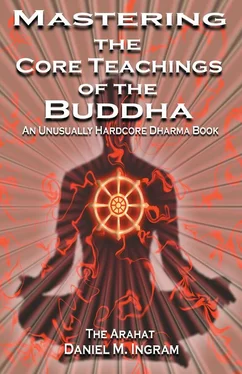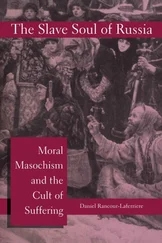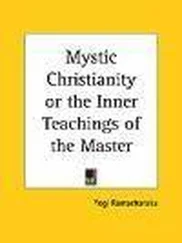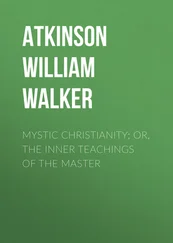Daniel Ingram - Mastering the Core Teachings of Buddha - An Unusually Hardcore Dharma Book
Здесь есть возможность читать онлайн «Daniel Ingram - Mastering the Core Teachings of Buddha - An Unusually Hardcore Dharma Book» весь текст электронной книги совершенно бесплатно (целиком полную версию без сокращений). В некоторых случаях можно слушать аудио, скачать через торрент в формате fb2 и присутствует краткое содержание. Год выпуска: 2009, ISBN: 2009, Издательство: Aeon Books, Жанр: Старинная литература, на русском языке. Описание произведения, (предисловие) а так же отзывы посетителей доступны на портале библиотеки ЛибКат.
- Название:Mastering the Core Teachings of Buddha - An Unusually Hardcore Dharma Book
- Автор:
- Издательство:Aeon Books
- Жанр:
- Год:2009
- ISBN:9781904658405
- Рейтинг книги:5 / 5. Голосов: 1
-
Избранное:Добавить в избранное
- Отзывы:
-
Ваша оценка:
- 100
- 1
- 2
- 3
- 4
- 5
Mastering the Core Teachings of Buddha - An Unusually Hardcore Dharma Book: краткое содержание, описание и аннотация
Предлагаем к чтению аннотацию, описание, краткое содержание или предисловие (зависит от того, что написал сам автор книги «Mastering the Core Teachings of Buddha - An Unusually Hardcore Dharma Book»). Если вы не нашли необходимую информацию о книге — напишите в комментариях, мы постараемся отыскать её.
Mastering the Core Teachings of Buddha - An Unusually Hardcore Dharma Book — читать онлайн бесплатно полную книгу (весь текст) целиком
Ниже представлен текст книги, разбитый по страницам. Система сохранения места последней прочитанной страницы, позволяет с удобством читать онлайн бесплатно книгу «Mastering the Core Teachings of Buddha - An Unusually Hardcore Dharma Book», без необходимости каждый раз заново искать на чём Вы остановились. Поставьте закладку, и сможете в любой момент перейти на страницу, на которой закончили чтение.
Интервал:
Закладка:
One of the most profound things about these stages is that they are strangely predictable regardless of the practitioner or the insight tradition. Texts two thousand years old describe the stages just the way people go through them today, though there will be some individual variation on some of the particulars today as then. The Christian maps, the Sufi maps, the Buddhist maps of the Tibetans and the Theravada, and the maps of the Khabbalists and Hindus are all remarkably consistent in their fundamentals. I chanced into these classic experiences before I had any training in meditation, and I have met a large number of people who have done likewise. These maps, Buddhist or otherwise, are talking about something inherent in how our minds progress in fundamental wisdom that has little to do with any tradition and lots to do with the mysteries of the human mind and body. These stages are not Buddhist but universal, and Buddhism is merely one of the traditions that describes them, albeit unusually well.
The progress of insight is discussed in a number of good books, such as Jack Kornfield’s A Path with Heart in the section called Dissolving the Self, which I highly recomment. A very extensive, thorough, accessible and highly recommended treatment of it is given in Mahasi Sayadaw’s works The Progress of Insight and Practical Insight Meditation (on BPS out of Sri Lanka), a partially castrated version of which appears in Jack Kornfield’s Living Dharma. It should be noted here that Practical Insight Meditation is my favorite dharma book of all time with no close competitors. If you can ever lay your hands on a copy, do so! Even the section of it that appears in Living Dharma is much better than having access to none of it at all.
Sayadaw U Pandita’s In This Very Life also covers this territory, and is a bit of a must have for those who like lists and straight-up Theravada, but he leaves out a lot of juicy details. The Vis
uddhimagga , a 5th
Century text by Buddhaghosa, also does a nice treatment of these stages, and contains some interesting and hard to find information. It focuses largely on the emotional side-effects and thus misses many useful points.
Another good but brief map appears in Ven. Khenpo Karthar
Rinpoche’s Dharma Paths. You could also check out Bhante
167
The Progress of Insight
Gunaratana’s The Path of Serenity and Insight if you would like to know the dogma well. It is a thorough and scholarly work.
Matthew Flickstein’s Swallowing the River Ganges is a light
treatment of basic Buddhist concepts and contains a very superficial treatment of the stages of insight. It is kind of like what would happen if you condensed a medical school textbook down to a 5th grade science text. It focuses almost entirely on the emotional side effects and thus misses a huge amount that is worthy of discussion, but it comes from a good place and is harmless enough. It doesn’t add anything to the above sources but is easy to read.
There are many less accessible maps of insight as well. The Tibetan Book of the Dead
, Li
beration Through Hearing in the Bardo requires
some prior familiarity with this territory to sort out the wild symbolic imagery. A 12th Century Sufi map is given in Journey to the Lord of Power by Ibn 'Arabi, but again the medieval symbolism is somewhat hard to untangle unless you are already personally familiar with these stages. It also provides a very interesting if quite cryptic description of the higher stages of realization. St. John of the Cross’ The Dark Night of The
Soul does a good job of dealing with the most difficult of the insight stages. His map is called The Ladder of Love. Unfortunately, the translation of the medieval Spanish and thickness of complex Catholic dogma make it a fairly inaccessible.
I strongly recommend that you consult some of these other sources, particularly the first five mentioned. While I consider the treatment of the stages of insight that follows shortly to be by far the most comprehensive and practical explanation of the stages of insight ever written, and I mean that honestly, there are still lots of great points made in those books, and you should check them out. There is a huge amount of valuable information left out in all of these sources, perhaps due to the Mushroom Factor, but perhaps due to some of the
difficulties in describing all the little nuances of the subject in all its possible variations. Thus, working with a teacher who has personal mastery of these stages (regardless of what they call them) is an extremely good idea most of the time.
The model terminology I am using is from the ancient
commentaries on the Pali Canon of the Theravada tradition. This 168
The Progress of Insight
model is used mostly in Burma but is also used to some degree in the other Theravada traditions. Zen is quite aware of these stages, as all Zen Masters had to go through them and continue to do so, but they tend not to name them or talk about them, as is their typical style. This can be helpful, as people can get all obsessed with these maps, turning them into a new form of useless content and a source of imprisoning identification and competition. This is the ugly shadow side of goal-oriented or map-based practice, but it often (though not always) may be overcome with honest awareness of this fact.
Luckily, if the meditator really is into insight territory, continued correct practice has a way of unsticking them given time. Also, when the proverbial stuff is hitting the fan, having a map around can really help the meditator not make too many of the common and tempting
mistakes of that stage, as well as provide the meditator with faith that that they are on the right track when they hit the hard or weird stages.
These stages can significantly color or skew a meditator’s view of their life until they master them, and it can be very helpful to remember this when trying to navigate this territory and keep one’s job and relationships functioning. Those who do not have the benefit of the maps in these situations or who choose to ignore them are much more easily blindsided by the psychological extremes and challenges which may sometimes accompany stages such as The Arising and Passing Away and those of The Dark Night.
While many people don’t want to know the maps for various
reasons (such as their own unexamined insecurities), I suspect that many more people could get a lot farther in their practice if they did know them. At their very least, the maps clearly demonstrate that there is vastly more to all this than just philosophy or psychology. They also clearly and unambiguously point to how the game is played step by step and stage by stage, what one is looking for and more importantly why, and give guidelines for how to avoid screwing up along the way. Why people wouldn’t want to know these things is completely beyond me.
They fill in the juicy details of the seemingly vast gap from doing some seemingly boring and simple practice to getting enlightened.
Further, providing all of this extremely precise information on exactly what to do puts the responsibility for progress or a lack thereof clearly 169
The Progress of Insight
on the meditator (e.g. you), which is exactly where it should be. If after reading this book you don’t put this extremely powerful information into practice, the fault is your own.
There is considerable evidence that the lack of this information in insight traditions that don’t use the maps has been one of the primary obstacles to progress. On the other hand, the maps can sometimes cause furious competition and arrogance in the traditions that do use them, as well as harmful fixation on purely future-oriented goals. Please, do your very best to avoid these sorts of problems.
The more intense, consistent and precise the practice, the easier it is to see how the maps apply. The more energy, focus and consistency is put into practice, the more dramatic and even outrageous these stages can be. If these stages unfold over long periods of time and gently, it can be more difficult to see the progression through them, though it does happen regardless. Certain emphases in practice, such as Mahasi Sayadaw style “noting” practice, particularly on intensive retreats, seem to produce a clearer appreciation of the maps, and some individuals will have an easier time seeing how these maps apply than others will.
Читать дальшеИнтервал:
Закладка:
Похожие книги на «Mastering the Core Teachings of Buddha - An Unusually Hardcore Dharma Book»
Представляем Вашему вниманию похожие книги на «Mastering the Core Teachings of Buddha - An Unusually Hardcore Dharma Book» списком для выбора. Мы отобрали схожую по названию и смыслу литературу в надежде предоставить читателям больше вариантов отыскать новые, интересные, ещё непрочитанные произведения.
Обсуждение, отзывы о книге «Mastering the Core Teachings of Buddha - An Unusually Hardcore Dharma Book» и просто собственные мнения читателей. Оставьте ваши комментарии, напишите, что Вы думаете о произведении, его смысле или главных героях. Укажите что конкретно понравилось, а что нет, и почему Вы так считаете.












